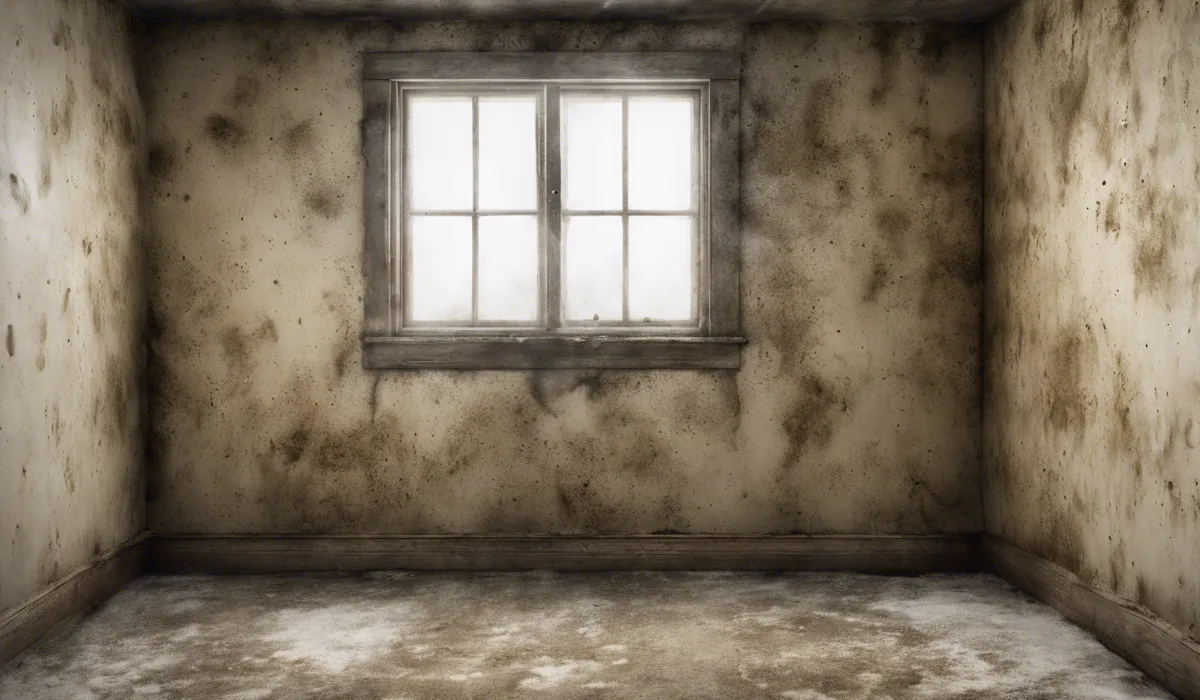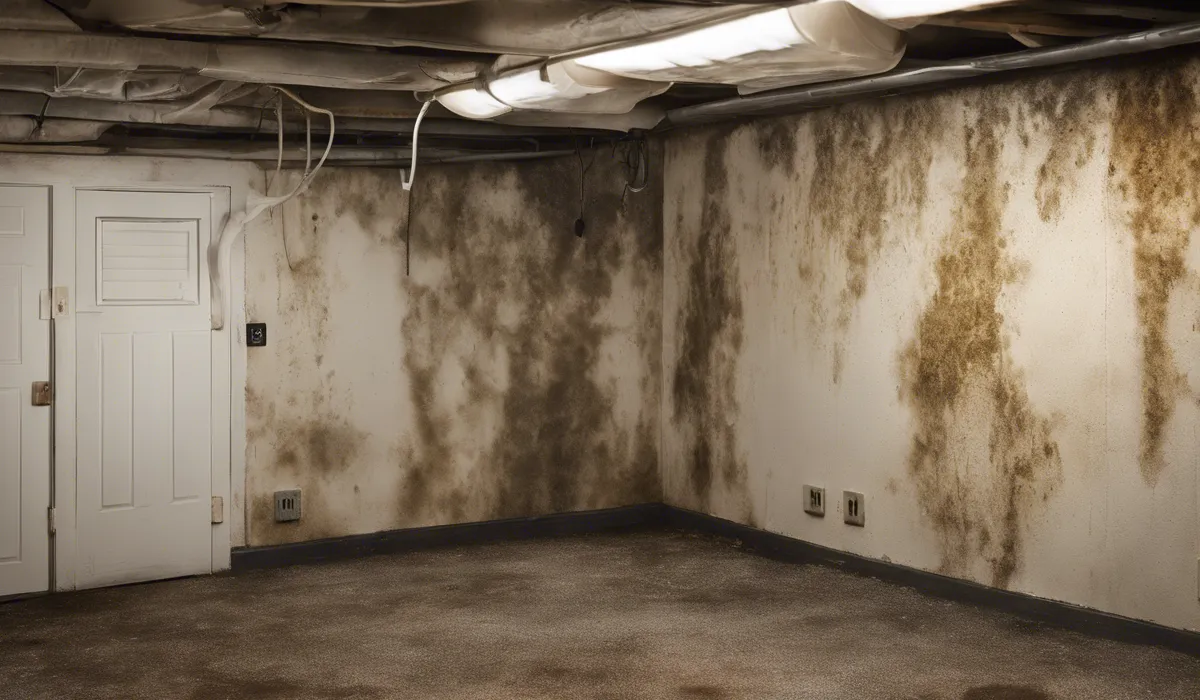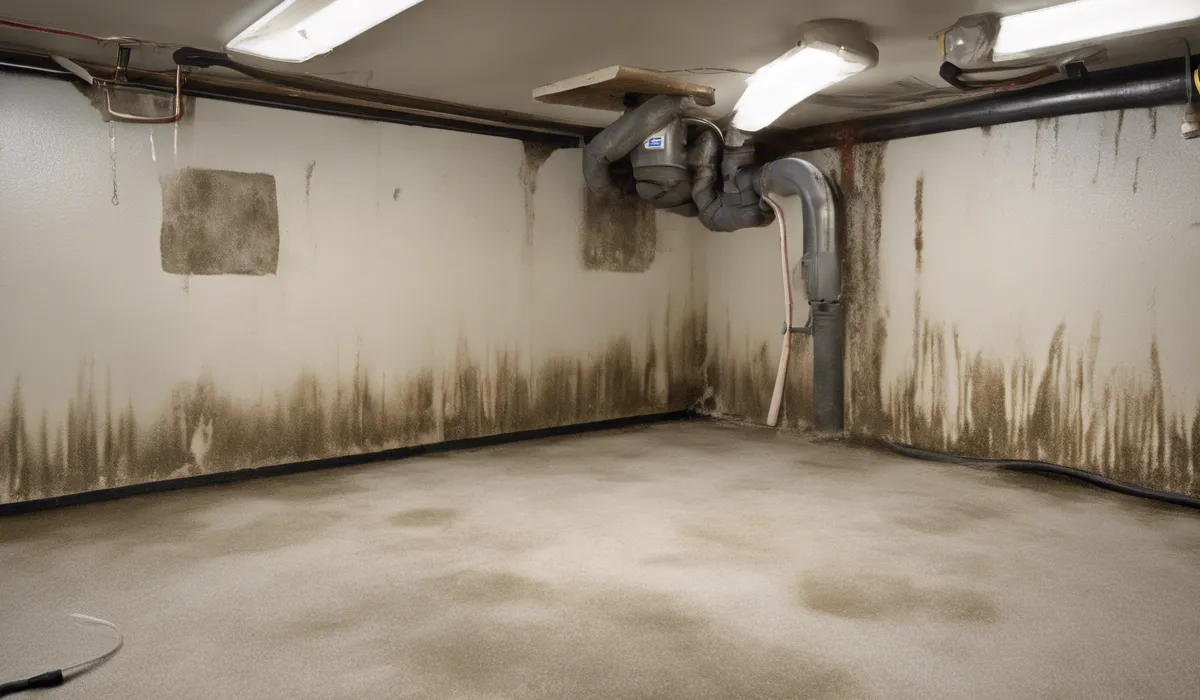Vinegar can kill mold on basement walls as it is a mild acid that can break down mold structure. For effective removal, apply white distilled vinegar directly to moldy surfaces and let it sit for an hour before scrubbing and rinsing. Repeat if necessary to prevent regrowth.
Understanding Mold and Vinegar

What is Mold?
Mold is a type of fungus that can grow almost anywhere there is moisture and organic material.
It reproduces by producing spores that can spread through the air. In basements, common types of mold include Cladosporium, Penicillium, and Aspergillus.
These are not just unsightly, but some molds can also cause health problems, especially for those with allergies or weakened immune systems.
Conditions Favoring Mold Growth
Basements provide the perfect environment for mold to thrive. They are often damp, lack sunlight, and have poor ventilation.
High humidity and water leaks can also contribute to mold growth. Organic materials like wood, paper, and fabric that are commonly found in basements can serve as food for mold.
Vinegar as a Mold-Killing Agent
Types of Vinegar
There are various types of vinegar, but white distilled vinegar is most commonly recommended for mold removal because it contains about 5% acetic acid. This acid is strong enough to break down mold without damaging most surfaces.
Impact of Vinegar on Mold
Vinegar’s acetic acid content can penetrate and kill the mold at its roots. It disrupts mold growth and prevents it from reproducing by killing the spores.
Comparing Vinegar to Other Remedies
Vinegar is a safer, non-toxic alternative to many commercial mold removers. It’s eco-friendly and does not emit harmful fumes. However, it may not be as powerful as chemical treatments when dealing with extensive mold infestations.
Effectiveness of Vinegar Against Mold on Basement Walls

Scientific Backing of Vinegar’s Antimicrobial Traits
Research shows that vinegar is effective at killing a variety of microorganisms, including some types of bacteria and viruses.
Studies have also indicated that vinegar can kill mold, but its effectiveness can vary based on the concentration of acetic acid and the type of mold.
Advantages and Disadvantages of Using Vinegar
Using vinegar is cost-effective and accessible to most people, as it’s a common household item. It’s also environmentally friendly.
The downside is that vinegar has a strong smell, which some may find unpleasant, and it may not work on all types of mold.
Vinegar’s Penetration Limitations
While vinegar can kill surface mold, it may not always penetrate deeply into porous materials like wood and drywall. If mold has infiltrated these materials, vinegar might not be able to reach and kill all of the growth.
Safety Measures with Vinegar
Vinegar is safe to use in most enclosed spaces, but ventilation is still important. Opening windows or using fans can help dissipate the vinegar smell and any spores released during cleaning.
It’s also a good idea to wear protective gear, such as gloves and a mask, to avoid mold exposure.
Practical Application of Vinegar for Mold Removal

Preparation and Safety
Before starting the mold removal process, remove items from the affected area and cover any items that cannot be moved. Wear protective gear, including gloves, goggles, and a mask. Ensure the room is well-ventilated.
Step-by-Step Vinegar Treatment Guide
Applying Vinegar to Mold
Fill a spray bottle with undiluted white distilled vinegar. Spray generously on moldy surfaces. For larger areas, you can also use a bucket and sponge to apply vinegar.
Letting Vinegar Work Its Magic
After applying vinegar to the mold, let it sit for at least an hour to penetrate and kill the mold spores. Do not rinse immediately.
Post-Cleaning Steps
Once the vinegar has had time to work, scrub the area to remove the mold. Rinse with water and dry the area thoroughly to prevent mold from returning. Keep the area dry and well-ventilated to discourage new mold growth.
Maintaining a Mold-Free Environment
To keep your basement mold-free, control humidity levels, fix leaks promptly, and ensure good ventilation. Regularly inspect your basement for signs of mold and address them quickly.
When to Call Professionals
If the mold problem in your basement is extensive or if you have health concerns, it’s time to call a professional mold remediation service. They have the expertise and equipment to safely and effectively remove large mold infestations.
FAQs About Vinegar Killing Mold on Basement Walls
Can vinegar effectively kill mold on basement walls?
Yes, vinegar can effectively kill mold on basement walls as it is a mild acid capable of breaking down the mold structure.
What type of vinegar should be used to kill mold on basement walls?
White distilled vinegar should be used to kill mold on basement walls due to its acidity and non-toxic nature.
How should vinegar be applied to moldy surfaces in the basement?
Vinegar should be applied directly to the moldy surfaces without dilution and allowed to sit for an hour before scrubbing off the mold.
Is it necessary to rinse off vinegar after applying it to moldy basement walls?
Yes, after the vinegar has sat for an hour, scrub the moldy area and then rinse it thoroughly to remove any remaining mold spores.
What should be done if mold persists after an initial vinegar treatment?
If mold persists, repeat the vinegar application process as necessary to ensure all mold is killed and to prevent regrowth.
Final Thoughts
Vinegar effectively kills mold on basement walls due to its mild acidic nature that disrupts mold growth.
To combat mold, apply white distilled vinegar directly to the affected areas and let it sit for an hour. Scrubbing and rinsing off the vinegar post-application helps ensure removal. Reapplication may be necessary to deter future mold growth.
